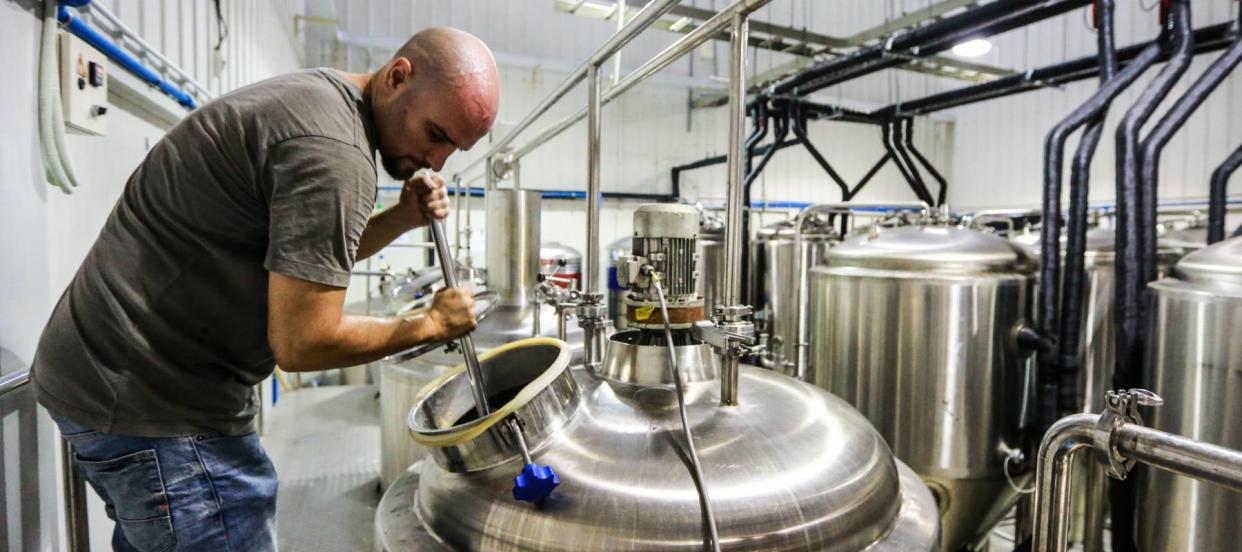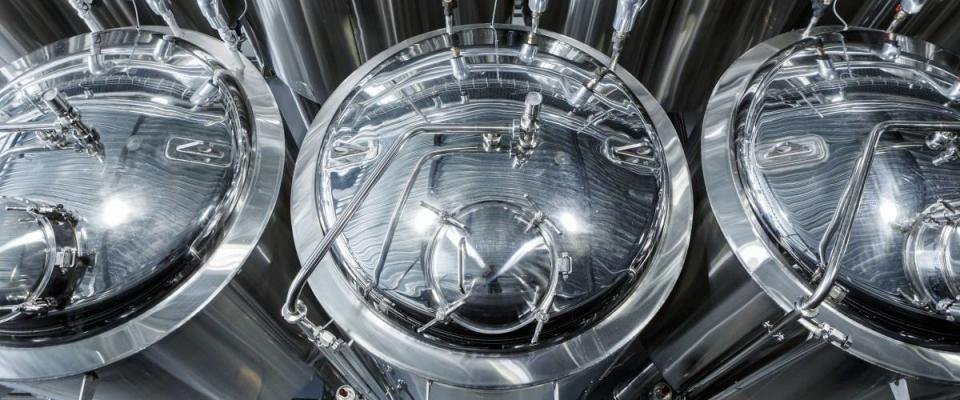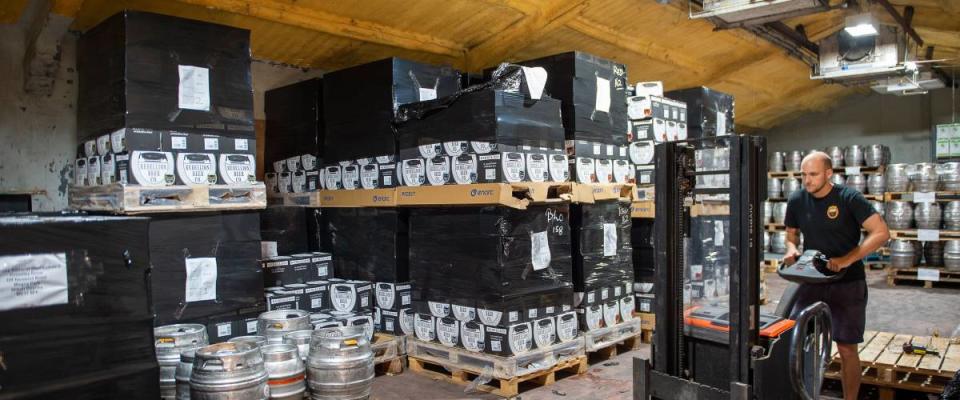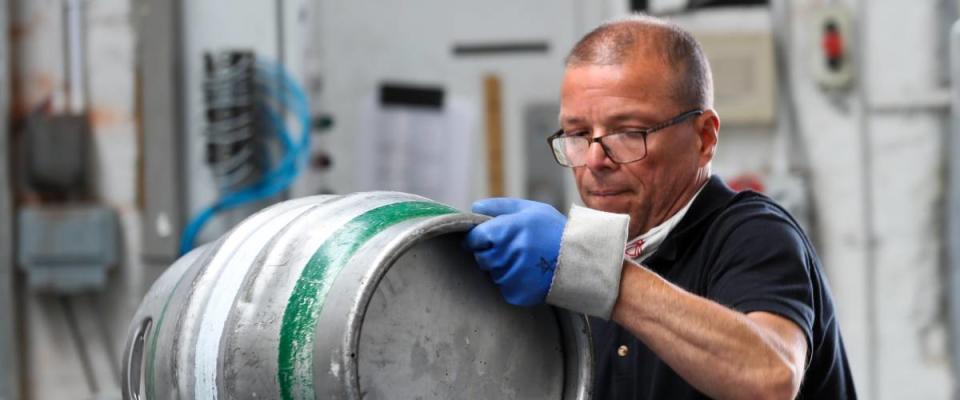Everything you need to know about starting a brewery

With Oktoberfest canceled this year, a lot of beer lovers are left in a hop-less funk.
Well, if you’re a seasoned home brewer, you’ve probably dreamed about starting a brewery of your own: a place where you get to decide what’s on tap and can share your latest hazy IPA or pastry stout with more than just a handful of friends.
The industry is booming. Craft breweries are popping up everywhere — in 2019, the U.S. had 8,275 in operation, up from just 4,670 in 2015 — and beer apps like Untappd boast millions of users.
It’s an intoxicating idea, but the process of getting a brewery off the ground will sober you up in a hurry if you aren’t prepared. Having passion is a great start, but you’ll also need money, equipment and an airtight business plan — not to mention plenty of time and patience.
So before you put all your hops in one kettle, let’s look at the logistical and legal sides of opening a brewery.
Know your market and find your niche

As with any small business, the first step to opening a craft brewery is to research the market you’re hoping to break into.
You should have a solid understanding of the local beer scene and a good sense of who your customers will be. Check out the other breweries in your area and take stock of what they’re doing well and what they lack.
Finding an open niche is vital for success, says Peter Bissell, co-founder of Portland, Maine’s Bissell Brothers Brewing.
“When we opened, we saw a hole in the market that didn't exist and set about trying to be the brewery we wanted to go to,” Bissell told MoneyWise via email.
Bissell Brothers Brewing made a name for itself on a dank, citrusy American IPA called The Substance. Now it operates two full-scale breweries: one focusing on hoppy ales, and the other on mixed-fermentation and barrel-aged beers.
To make a splash in your local beer scene, you’ll need to do something unique and do it exceptionally well.
Size up your costs
Once you’ve done your homework and have decided on the direction you want to take with your brewery, you can start planning for your costs.
A brewery is a capital-intensive business, so you’ll need to account for all the potential expenses before you start looking for financing.
Here are some of the essential costs you’ll need to consider:
Brewing equipment

Your equipment costs will depend in large part on the size of your operation.
The setup needed to brew two barrels (62 gallons, or 660 12-ounce bottles) at once will cost around $80,000 to $90,000 if you buy new, says Prospero Equipment Corporation.
However, you’ll likely need a significantly bigger setup unless you’re planning to brew in extremely small batches. Two barrels is the equivalent of around 110 six-packs.
Many moderate- to large-sized craft breweries use a 15-barrel system, which costs between $275,000 and $300,000 new.
The main equipment you’ll need includes:
Boilers
Kettles
Fermentation tanks
Storage tanks
Kegs
Filters
Cooling equipment
Cleaning equipment
Refrigerators
Canning or bottling equipment
It can be tricky — and costly — to modify your system once it’s set up, so it’s a good idea to plan for 50% more capacity than you expect you’ll need during the beginning stages of your operation.
Physical location

The location and size of the building will have a big impact on your monthly costs.
Brewing equipment takes up a lot of space, so you’ll probably need to do some construction work. This could include raising the ceilings, installing sloped composite floors and upgrading the plumbing and electrical systems in the building.
If you’re planning to operate a brewpub where your customers can sit down and enjoy a beer, you’ll also need to think about the decor, lighting and tap setup. Outdoor seating is a must because of COVID-19.
You could easily spend twice as much on construction and renovation as you spend on your brewing equipment.
You’ll also need to account for rent if you’re leasing the space, or property taxes if you own it.
Labor costs

Finally, you’ll need to factor in the cost of labor. If your operation will be small and you’ll act as the head brewer and marketer yourself, you may be able to get by with the help of friends and family.
But if you’re planning to run a bigger operation, you’ll likely need to hire some additional people to help you handle the brewing and packaging of your beer, as well as marketing and distribution.
And if your brewery will include a taproom, you’ll need to hire one or more employees who are certified to sell and serve alcohol in your state.
Secure financing

When you’ve done all the calculations and figured out how much capital you’ll need to get your brewery off the ground, it’s time to secure financing. There are a few different routes you can go, depending on how much you need.
Friends and family. If you’ve got a supportive friend group or family circle, you might want to start by asking them for financial help, especially if your brewery will be relatively small. Your family and friends will likely expect you to pay them less interest than you would to a bank or private lender. Just remember that if things don’t work out, you’ll be in their debt — and that could make for some seriously awkward family get-togethers.
Crowdfunding. Websites like Kickstarter, Indiegogo and GoFundMe will allow you to raise small amounts of money online from a wider network than just your family and close friends. Typically you’ll offer tiered rewards packages based on the size of the contribution, so you’ll need to figure out what these incentives will be before you launch your campaign. Some examples could include branded swag, tours and tastings, and VIP tickets to the grand opening.
Cash out refinancing. Another option is to refinance your mortgage at one of today's super-cheap interest rates, and take out some home equity for your brewery venture. With a cash-out refi, you replace your existing mortgage with a larger home loan and take the difference as cash. The risk with this route is that if things go sour and you’re unable to make your payments, you could lose your house.
Retirement accounts. Perhaps the diciest financing strategy, and one you should use only as a last resort, is tapping into your retirement accounts, like an IRA or a 401(k). Not only will you put your retirement savings at risk, but you’ll also be subject to hefty taxes and early withdrawal fees.
No matter which financing option you go with, you should have a plan for repayment. You’ll need to work out a feasible schedule that won’t put financial strain on your day-to-day operations.
Once your brewery is up and running, you might want to apply for a Small Business Administration (SBA) loan to help expand your operation. SBA loans typically come with long terms, low interest rates and high limits.
However, to qualify for an SBA loan, you’ll need to have excellent credit and substantial revenue from your business. You’ll also want to compare rates from different SBA loan providers to find the best option.
Deal with the paperwork

After you’ve secured financing, the most tedious part of the process begins: taking care of all the legal and regulatory requirements.
Much of this stuff will require the help of a professional (a beer-loving lawyer can be a powerful friend), but here’s a quick overview of what you’ll need to do.
Register your business
First off, you’ll need to register as a new business with your state, either as a limited liability company (LLC) or a corporation.
These two types of business entities differ in a number of ways, including the way they’re taxed and their capital structure. Each has its own pros and cons, so you’ll want to talk to a lawyer about which route is best suited for the size of your operation and your long-term goals for the business.
Once that’s ironed out, you’ll need to choose a name for your brewery and trademark it with the United States Patent and Trademark Office. If you’ve already got logos and brand names for the beers you’re planning to brew, you can trademark those, too.
Get your financial documents in order
Next you should prepare documentation detailing how you plan to finance your brewery, which is a prerequisite for obtaining a brewer’s license in every state.
This documentation usually takes the form of a Statement of Funding Sources, which breaks down where the money you’ll use to start your brewery will come from.
If you plan to take out a small business loan to help pay for your startup costs, you’ll also need to get insurance. Most banks won’t lend to you unless you have property insurance, casualty insurance and liquor liability insurance.
That’s a lot to get organized, some websites can find you free quotes for all your insurance needs in just minutes, which can really help speed up the process.
In addition to your financial documentation, you’ll need to provide info on your place of operation, including your lease or rental agreement.
It’s important to have a lawyer look over these documents before you submit them to confirm that you’re in compliance with all federal and state laws.
Apply for a federal brewing permit
Once your financial documentation is in order, you’ll need to apply for a federal brewing permit from the Alcohol and Tobacco Tax and Trade Bureau.
There’s no fee at the federal level to apply for a brewing permit, but you’ll likely need to hire a lawyer to ensure that you’re complying with every step of the process.
It often takes four to six months to process a brewing permit application, so prepare for a lengthy wait.
Get a brewer’s bond
In the meantime, you’ll also need to obtain a brewer’s collateral bond, which is a legal document that ensures you’ll pay the federal excise tax on the beer that you sell.
The exact amount of your bond will depend on how much beer you expect to sell and how much excise tax you expect to pay.
Once you’ve determined the amount required, you can pay for your bond in the form of a check, money order or treasury note. Your brewer’s bond will expire four years after its effective date.
Obtain the necessary state and local licenses
In addition to applying for a federal permit with the TTB, you’ll also need to get a liquor license from your state.
The office you’ll need to apply to will depend on where you live, so you’ll need to do a bit of research to find out where to submit your application.
You’ll likely be required to submit a number of documents with your application, which may include your Statement of Funding Sources, your lease or rental agreement, a floor plan for your brewery and your brewer’s bond.
Depending on whether you’re planning to sell merchandise at your brewery, you might also need to apply for a retail license with your state.
Get to work

When all the t’s have been crossed and the i’s have been dotted, and your physical space and gear are set up and ready to go, you can finally get down to the actual brewing. Phew.
Brewing is not a get-rich-quick scheme, so you can expect to work at it for a few years before you start to see a profit. Even then, plan to put most of what you earn back into the business.
It may not be easy, but if you make good beer, people will drink it. And that’s what it’s all about, right?

 Yahoo News
Yahoo News 
